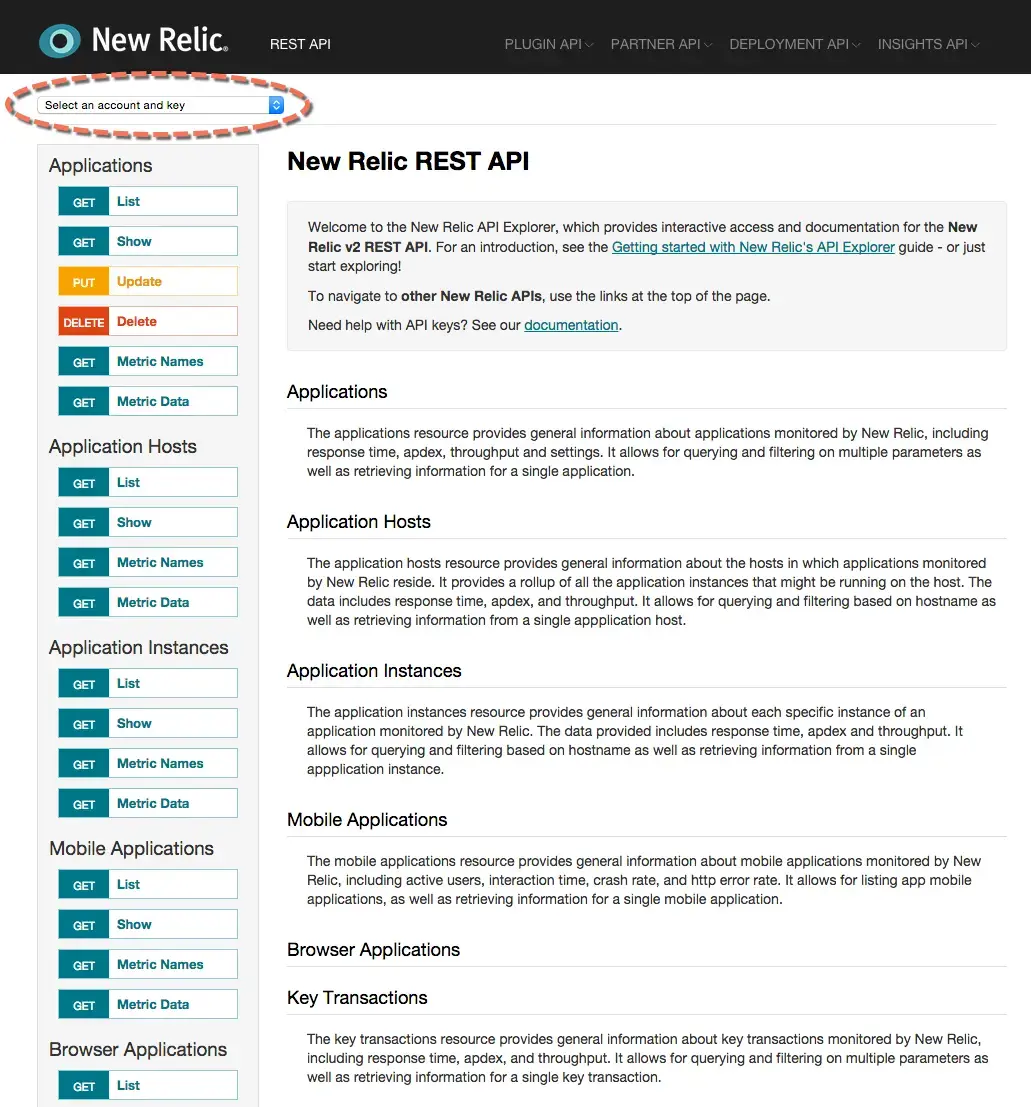New Relic offers several APIs, including the New Relic REST API. This document introduces you to the REST API Explorer, which allows admin users and those with the API Key to:
- Browse the available REST API endpoints.
- Interact with the REST API within a user interface (the API Explorer).
- View a live source of documentation.
- Obtain curl commands for API actions.
- Share configured API calls with colleagues by copy and pasting API Explorer's URLs.
This helps you to quickly search for solutions and test your API calls before adding them to your own software components.
REST API calls for infrastructure are not available in the API Explorer.
Features
New Relic's API Explorer includes an interactive user interface for your selected account. The API Explorer UI lists the types of API calls (Applications, Users, etc.) and their available functions, such as GET metric data, PUT (update) applications, DELETE applications, etc.
As you type values for Parameters, they automatically appear in the Request so that you can test and verify your syntax before sending the request. The UI indicates required fields, field descriptions, their type (integer, float, Boolean, etc.), and their location (path, query, etc.).
For information on API key requirements, see REST API keys.

rpm.newrelic.com/api/explore: The New Relic API Explorer makes it easy to test and send requests for any API endpoint. After you select your account and your choice of functions for the type of API call (applications, browsers, users, etc.), the UI provides an interactive form to view requirements and test your parameter values.
Differences from API version 1
This API Explorer applies only to the New Relic REST API version 2, which focuses on data in and data out of New Relic. Version 2 replaces New Relic's deprecated REST API version 1.
Be aware there are some differences between version 2 and 1:
- Names for data may be different.
- Some cURL commands for v2 are different than v1.
Sugerencia
The New Relic agents use different APIs and are not accessible via the API Explorer.